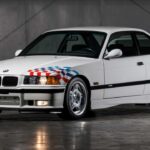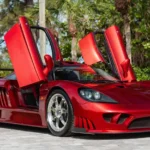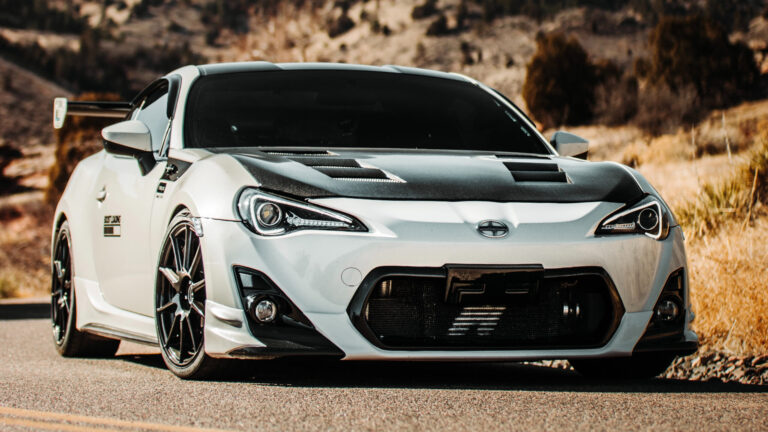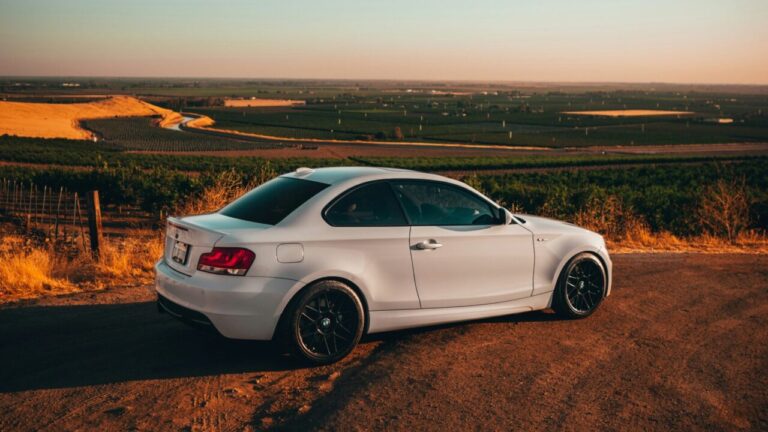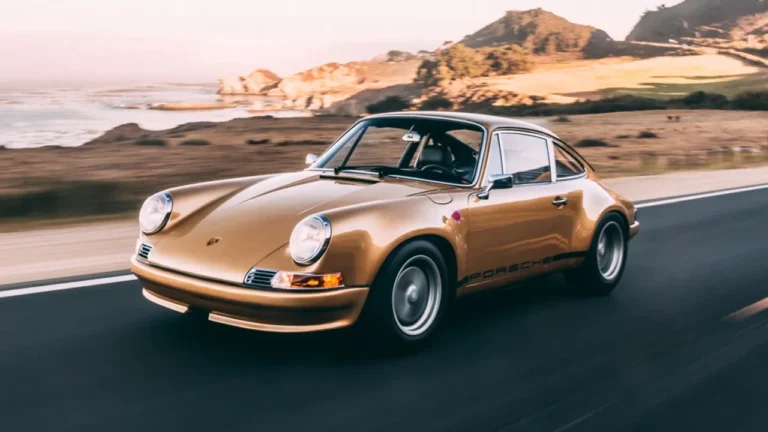
Britain may be famous for kicking round balls, a menu consisting of tea, crumpets, fish and chips, and warm beer, not to mention a royal family entrenched in scandals. But, there’s more to this island nation than that kind of weirdness. They’ve also built some amazing cars!
Sure, British cars may have earned a somewhat sketchy reputation regarding reliability, but I don’t care about that! Some of the greatest, best-looking cars the world has ever known have emerged from there. If there’s one thing the Brits know, it’s how to build stylish vehicles for driving enthusiasts.
So, without further ado, let’s check out 24 of the greatest British cars ever built.
McLaren F1

Seeing as the McLaren F1 is still an impressive supercar today, it’s hard to imagine how mind-blowing it must’ve been when it first arrived in 1992. With a top speed of 240 mph, it’s still the fastest naturally aspirated car ever.
In the middle of the F1, we find a 6.1-liter BMW V12 engine nestled in a gold-covered engine bay. Inside the cabin, the driver was seated in the center, with space for two passengers behind him (or her), making it more practical than most mid-engined supercars.
Mini
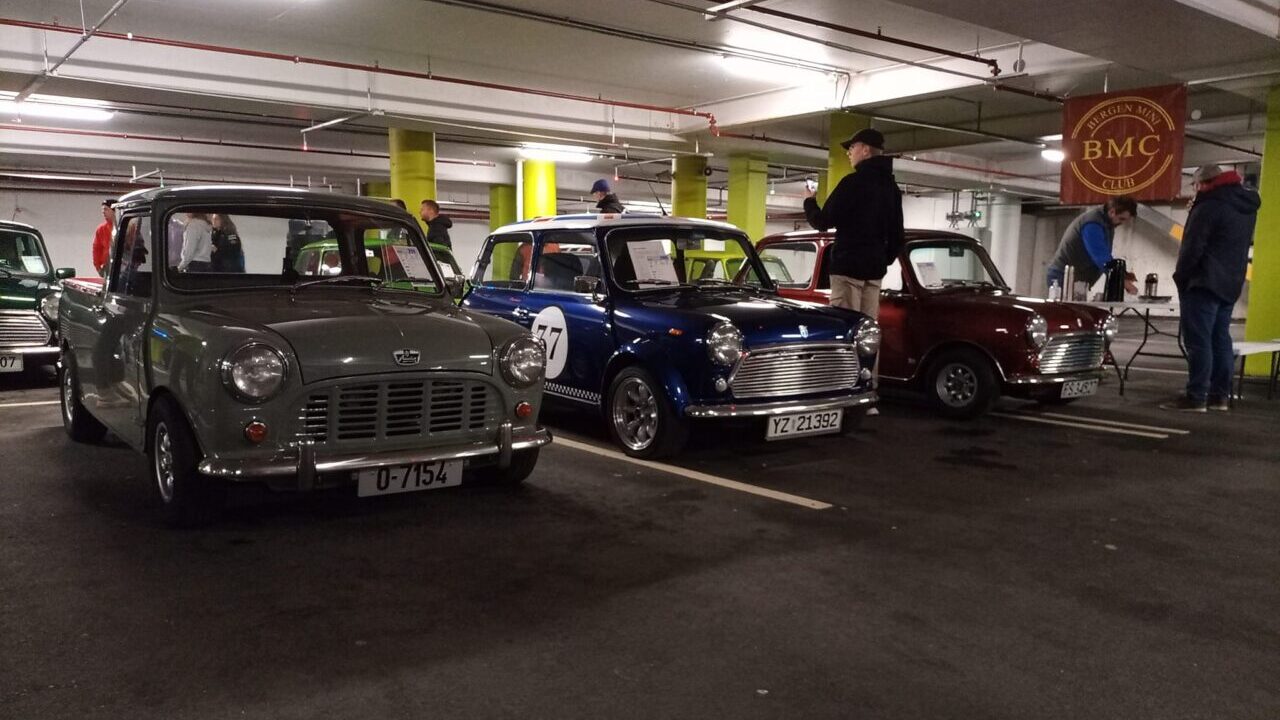
The original Mini may just be the most iconic British car ever. It had a 41-year production run, and while it may have started out as a practical economy car, it soon rose to stardom. During its production years, it became a motorsport legend, a movie and TV star, not to mention a fashion icon. That’s a tough act to follow!
When the New Mini was released in 2001, BMW was in the driver’s seat. It was still as fun and good-looking as ever, but it went from humble to premium and offered near-unlimited personalization options. That’s why it’s still one of the coolest cars in production today.
Ford Sierra RS500 Cosworth

The Ford Sierra RS Cosworth was a high-performance version of the European Ford Sierra, sold as the Merkur XR4Ti in the States, and the RS500 was an evolution of the “standard” Cossie. Ford built 500 units of the RS500, and they were sold exclusively in the UK.
The RS500 saw some minor exterior changes from the regular Cosworth, but its engine was more potent than ever. The turbocharged 2.0-liter delivered close to 230 horsepower stock, but it was highly tunable, and the racing version dominated touring car series around the globe.
Jaguar E-Type
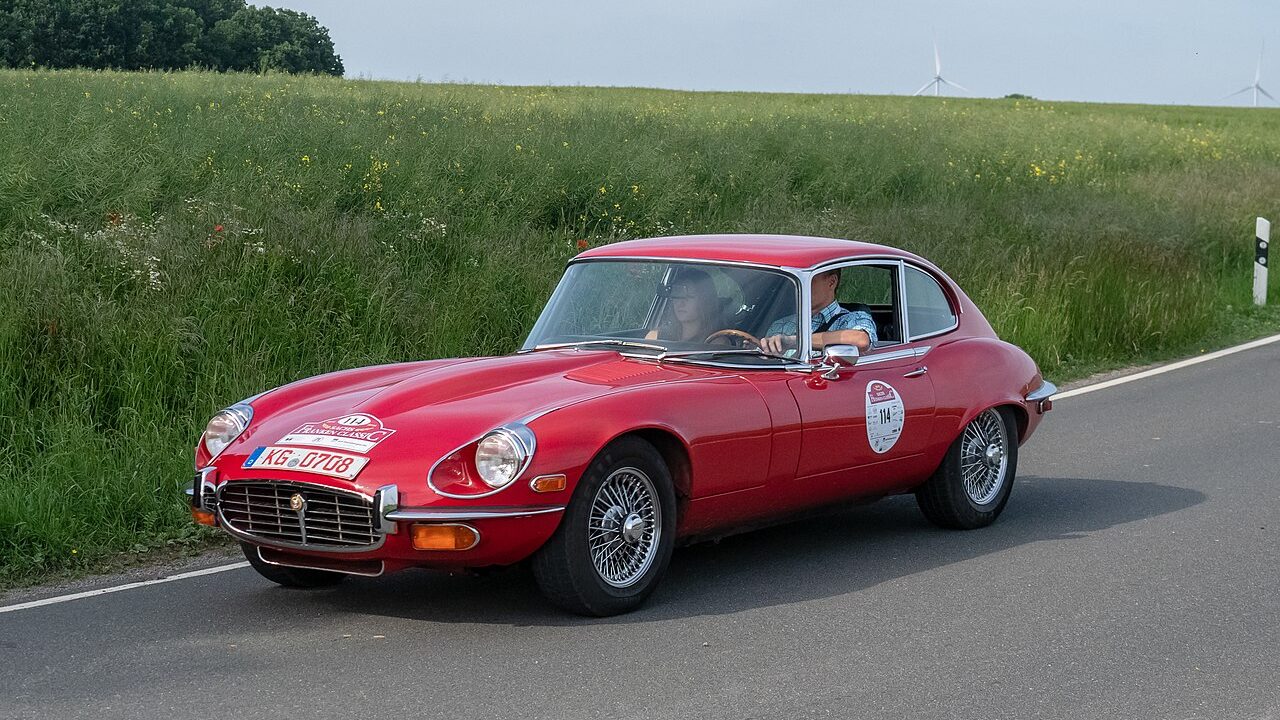
Jaguar’s E-Type, or XK-E in the States, was so stunning that even Enzo Ferrari allegedly called it the most beautiful car he’d ever seen. This Jaaag wasn’t all show and no go, however — it had brawn as well as beauty. The first cars were packing a 270 hp 3.8-liter straight-six engine.
With a top speed of 150 mph at a time when most cars would never reach 100 mph, it would require some serious machinery to keep up. Thanks to its independent suspension setup and disc brakes on all four corners, the E-Type could also handle twisty roads!
Land Rover Defender

The Land Rover Defender is like a British Jeep Wrangler. It was born in 1948, after WWII, and Rover needed to build a car that allowed them to utilize the expertise they gained during the war.
The reason behind the Defender’s flat body panels is that steel was rationed, and they wanted to use as little of it as possible. The Defender’s off-road capabilities are legendary, and while the first cars are best described as crude, they were slightly improved upon during the 67-year production run. There’s a reason why the Defender has been used in countless overland expeditions.
Aston Martin DB5
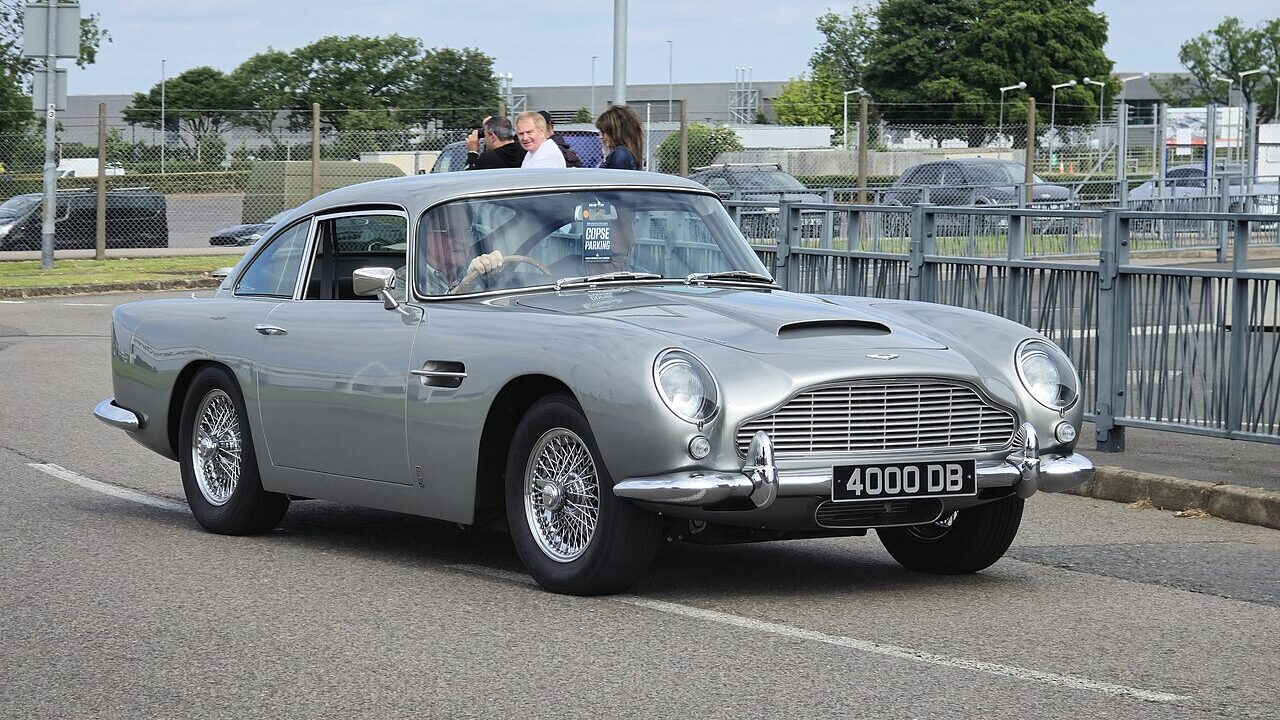
The Aston Martin DB5 is best known for its starring role in various James Bond movies, but it’s more than just a pretty face. While the real-life cars never offered smoke screens or machine guns, they did have a 4.0-liter inline-six that churned out 290 hp – enough for a top speed of 145 mph.
The DB5 is undoubtedly among the most desirable British cars ever made, but good luck getting your hands on one. Prices have skyrocketed, and Aston Martin only built 1,059 cars during its two-year production run.
Caterham Seven

The Caterham 7 was actually the brainchild of Lotus and its founder, Colin Chapman, who was obsessed with weight – or lack thereof. Chapman’s mantra was to “add lightness” to go faster, and Lotus still uses that formula in its cars today.
Lotus introduced the stripped-back Seven kit car in 1957, and it was an immediate success. Then, 16 years later, Lotus decided they wanted to produce fully-built, turnkey cars rather than kit cars, so they sold the rights to the Seven to Caterham Cars. Since then, countless versions of the bare-bones, track-ready Seven sports car have been sold under the Caterham name.
Jaguar XJ220

The 1980s were filled with Ferrari Testarossas and Lambo Countaches, and Jaguar wanted a piece of that yuppie pie. The British carmaker unveiled a V12-powered AWD supercar in 1988, and rich people loved it. Jaguar received 1,500 orders that all came with a £50,000 deposit – unheard of in those days.
Well, all good things must come to an end, and the economy crashed soon after Jaguar revealed the car. The XJ220 production model had a turbocharged six-cylinder instead of a V12, and RWD instead of AWD, so buyers abandoned their deposits and told Jaguar to kick rocks. In the end, Jaguar only built 271 XJ220s, which were sold for more than £400,000, each. However, its 212 mph top speed made it the world’s fastest car until the McLaren F1 came along.
Ford Escort Mk1

The 1967 Mk1 Ford Escort was as brilliant as it was simple. It was a small car offered with a range of small, four-cylinder engines that sent power to its rear wheels. Its design kind of made it look like a shrunken American car of that era.
The Ford Escort wasn’t just a cheap family car, however. It soon became a formidable force in motorsport, leading to some sporty versions for the road, effectively bringing high-performance cars to the masses. The Escort is still one of the most successful rally cars ever made.
Lotus Esprit

The Lotus Esprit is another British car that appeared in a Bond movie. The early cars with their wedge-shaped styling were among Giorgetto Giugiaro’s first polygonal “folded paper” designs. Later models had a more rounded look and were designed by Peter Stevens.
The Esprit was a sports car for driving enthusiasts, and its engines ranged from four-cylinder units to a twin-turbocharged V8. Thanks to Colin Chapman always wanting to keep his cars light, the turbocharged four-cylinder Esprit could keep up with the V12-powered competition.
TVR Chimaera
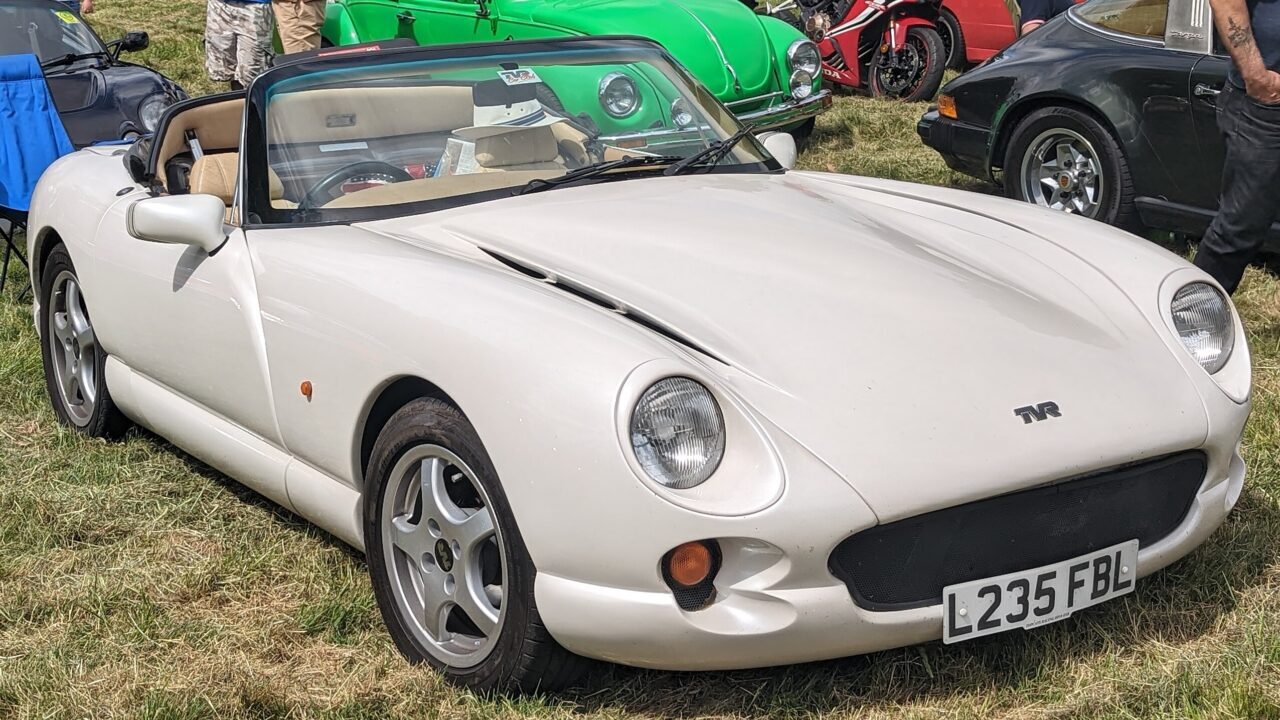
TVR’s sports cars don’t get the attention they deserve. Or rather, over the years, they’ve received a lot of negative attention due to various reliability issues. The Chimaera is a bit different, though. It is so simple; there just isn’t much that can go wrong with it.
The Chimaera, like all TVRs, is built for driving enthusiasts, and it’s powered by a ferocious 5.0-liter V8 that fires 340 hp straight at the rear wheels. Needless to say, it’s quite the handful to keep on the road, seeing as TVR didn’t believe in safety features, such as ABS, traction control, or even airbags for that matter.
Mk1 Lotus Elise

Lotus revealed the tiny, minimalistic Elise in 1996, and it immediately took the world by storm, changing the sports car world forever. It was as simple as a sports car could be, and since there were fewer things that could go wrong, it was also very reliable.
The Elise’s chassis was made from aluminum and glued rather than welded. The engine was a 1.8-liter Rover unit that Lotus worked its magic on. The Elise proved beyond any doubt that a lightweight car with an excellent chassis and a small engine would destroy the heavier, more powerful competition around a track.
Aston Martin DB7

Although under Ford ownership, the Aston Martin DB7 marks the British sports car manufacturer’s return to old form. In the late 80s, Ford bought the struggling Aston Martin, planning to turn it around by building an entry-level grand tourer.
Even though the DB7 is a parts bin special, built using parts from other brands under the Ford umbrella, it deserves a spot on this list since it revived the Aston Martin brand. Besides, it still looks fantastic today, turning heads wherever it goes!
Jaguar Mk2

Back in the good old days, the Jaguar Mk2 was the favorite car of both the British police and bank robbers, and it’s not difficult to understand why. The Mk2 was certainly a beauty with its beautiful bodywork; it also had a spacious, comfortable, and stylish interior, and last but not least, there was a 200+ horsepower 3.8-liter inline-six under the hood.
Jaguar’s founder, Sir William Lyons, famously said the brand should be defined by “Grace, pace, and space,” and the Mk2 certainly lived up to that.
Jensen Interceptor

The Jensen Interceptor was a British grand tourer designed in Italy and powered by a massive Chrysler V8 engine. Its 383 mill produced 330+ horsepower, which was almost unheard of in a British road car back in the 1960s.
However, the engine wasn’t the only thing that made it special. The FF model, or Ferguson Formula, was the first performance car with all-wheel drive. It would be another 14 years before Audi launched its Quattro system. The FF was also the first model with ABS.
Morris Minor
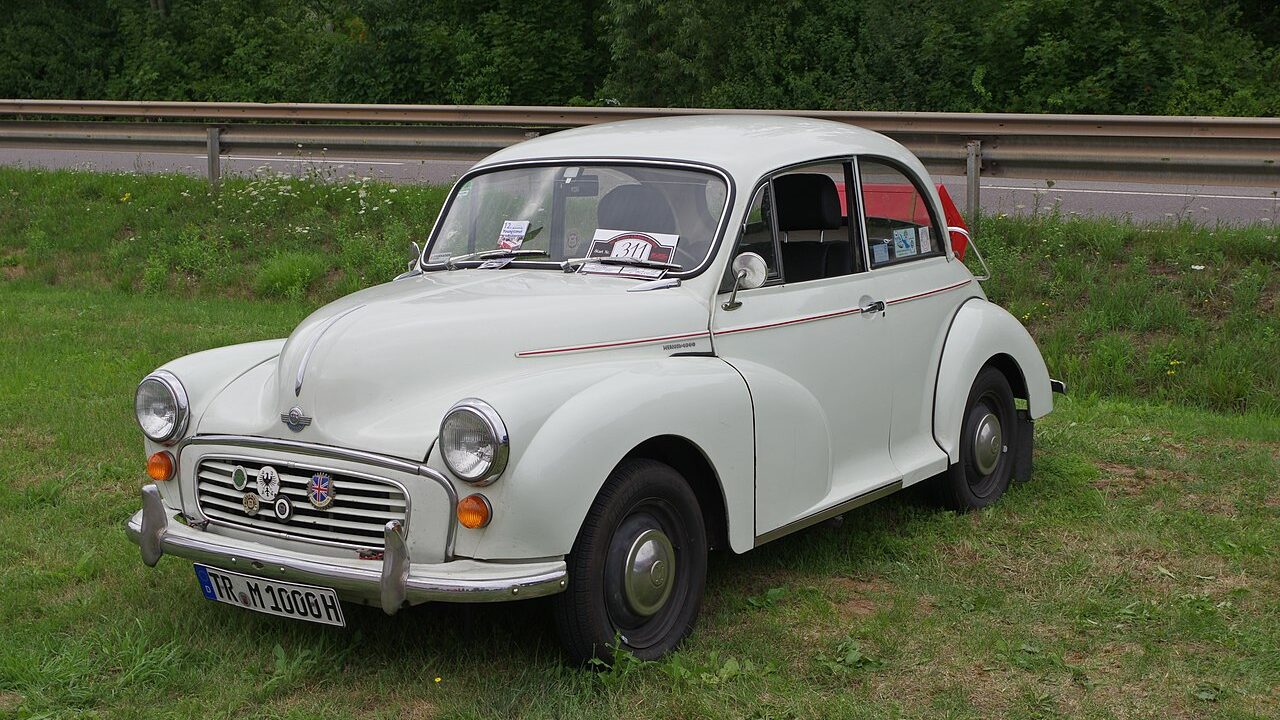
After WW2 left most of Europe in ruins, both literally and financially, carmakers were forced to innovate. Morris had to come up with an affordable yet desirable model, and who better to ask than Alec Issigonis, the genius who later went on to design the Mini?
The Morris Minor offered the same interior space as bigger and more expensive models, just what Morris wanted. They went on to produce two-door, four-door, convertible, wagon, van, and pick-up versions of the Minor, and its success led to a new record — the first British car to sell one million units.
Range Rover Mk1
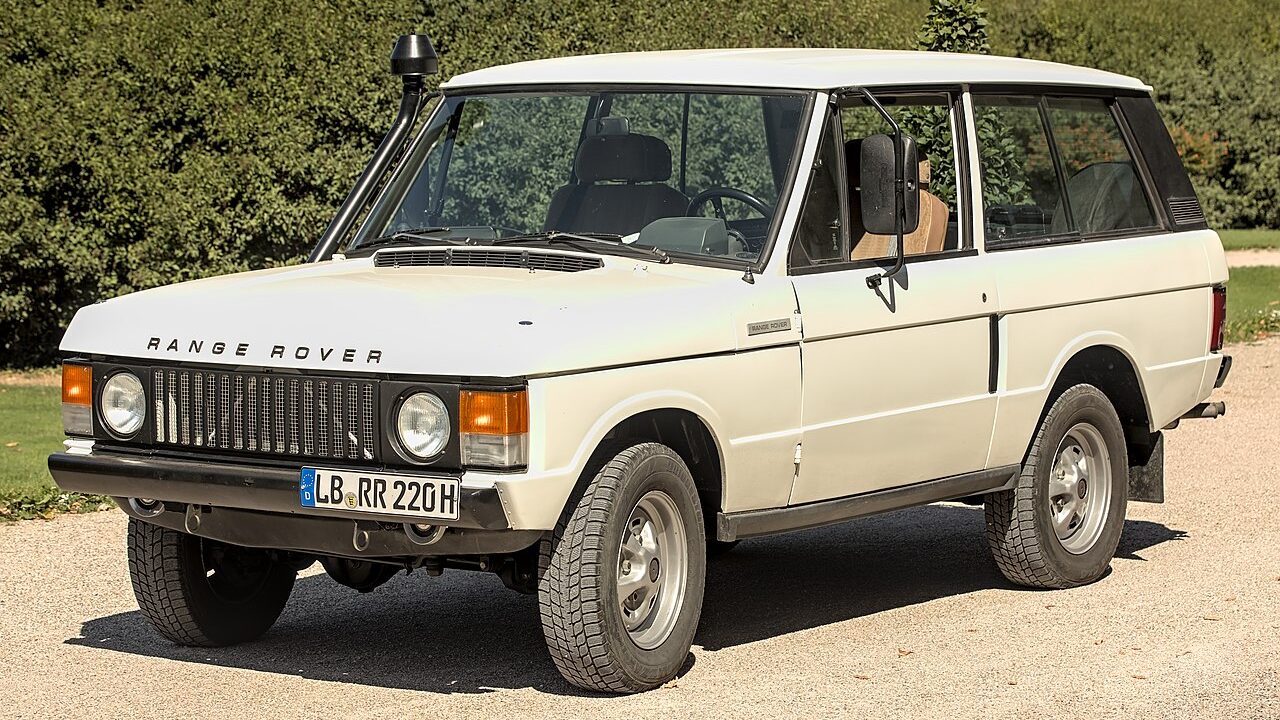
Rover had already built the famous Land Rover and some sedans when they came up with the first Range Rover in 1970. Perhaps somewhat surprisingly, the Range Rover is actually a combination of the Land Rover and the sedans. It was an attempt to create something unbeatable off-road yet refined on-road, unlike the Land Rover, which was very agricultural and far from comfortable.
They modified the Land Rover’s chassis to fit coil springs, and the 3.5-liter Rover V8 engine sent its power to all four wheels.
Lotus Elan

The humble Lotus Elan is the inspiration behind some of the world’s greatest drivers’ cars. There are no prizes for guessing that its handling was the benchmark for the NA Mazda Miata. However, you may be surprised that Gordon Murray, the genius behind the McLaren F1, says the Elan was his muse for the hypercar’s steering feel.
The original Elan followed the Lotus mantra to a T, meaning they shaved off weight wherever possible. Weighing around 1,550 lbs, the 100 horsepower Elan darted around racetracks, leaving more powerful cars in its dust.
McLaren P1
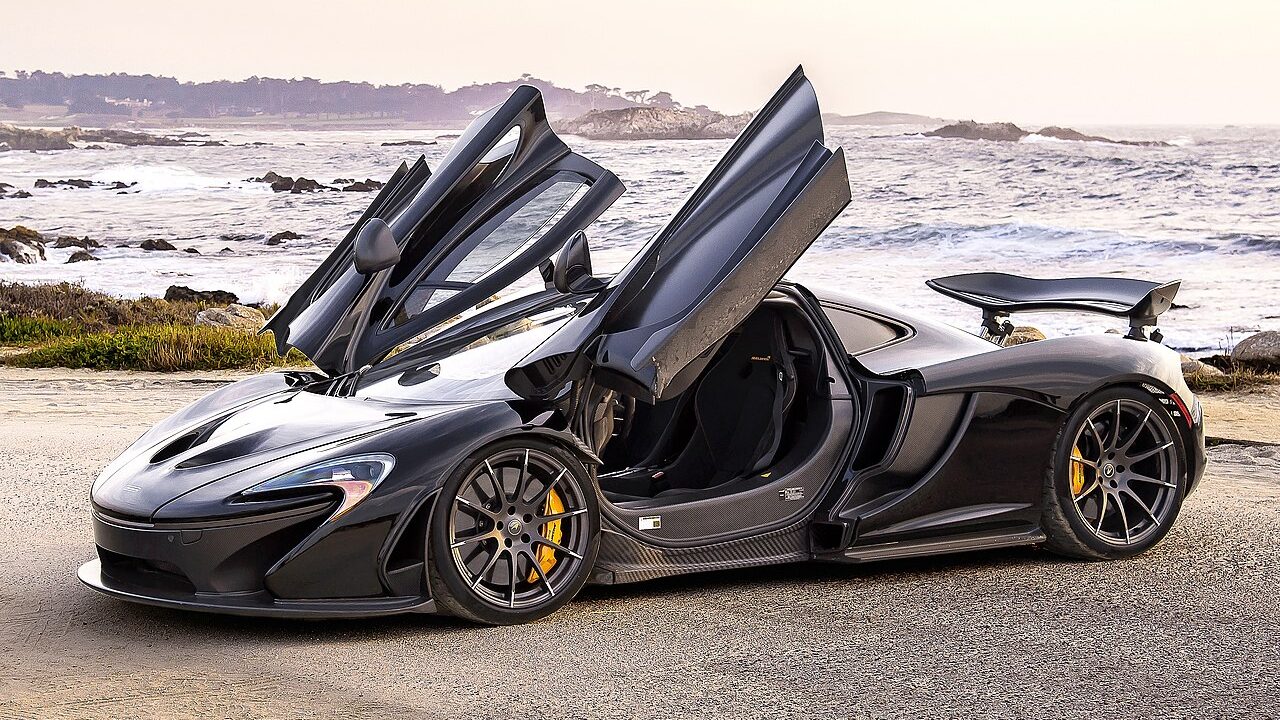
The McLaren P1 is a mid-engined, plug-in hybrid hypercar. It was part of the holy trinity of hypercars – the other two were the Ferrari LaFerrari and the Porsche 918. What makes the P1 truly incredible is all the technology and engineering behind it, which resulted in one of the most brutal machines ever made.
The P1 uses electric motors and a gasoline engine to produce a combined power output of 903 horsepower and 664 lb-ft of torque. The P1 also has a lot of Formula One-derived tech, such as an Instant Power Assist System (IPAS), a Drag Reduction System (DRS), and a Kinetic Energy Recovery System (KERS). Thanks to all that, it scrambles from 0 to 62 mph in just 2.8 seconds, and the top speed is electronically limited to 218 mph.
Austin Healey 3000
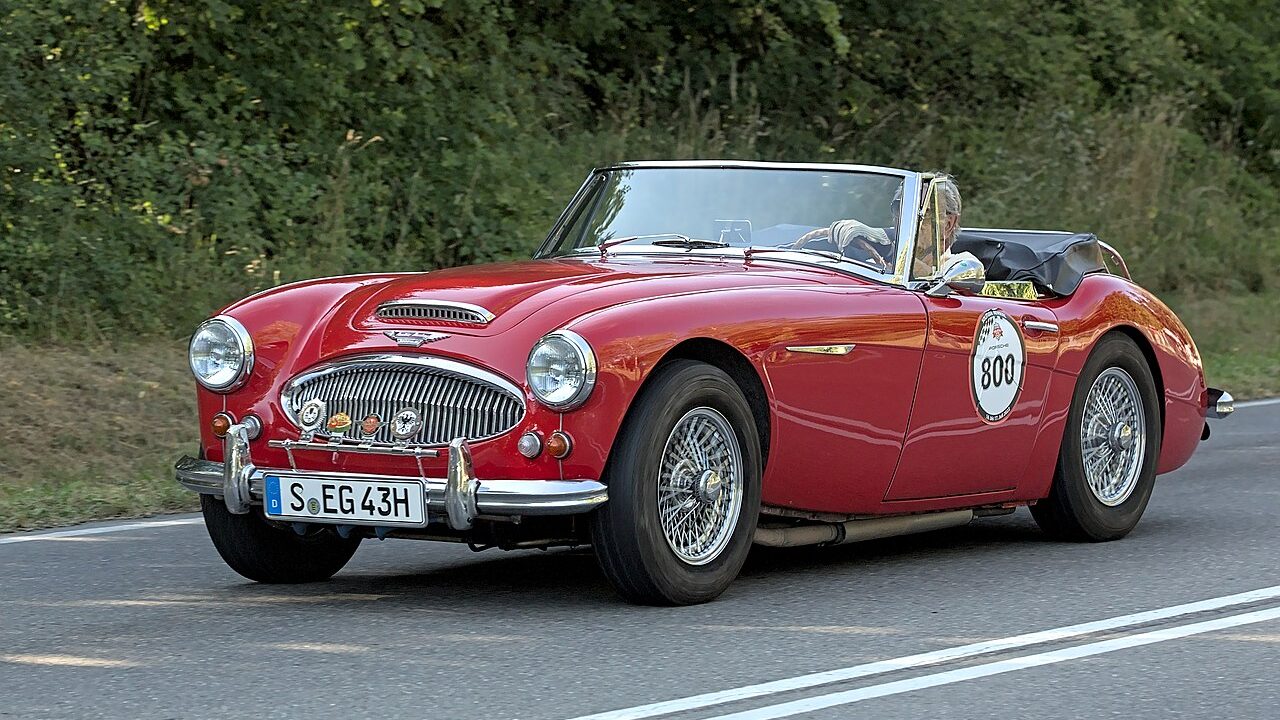
Sports cars were trendy back in the ’50s and ’60s, and the Austin-Healey 3000 packed enough power to be a serious contender. Its 3.0-liter straight-six engine produced close to 150 horsepower in the later models, which meant it would march past the 120 mph mark.
Unlike most British sports cars from this era, the Austin-Healey 3000 was also surprisingly reliable. Because of that, it was a popular and competitive choice for endurance racing.
Jaguar XK120
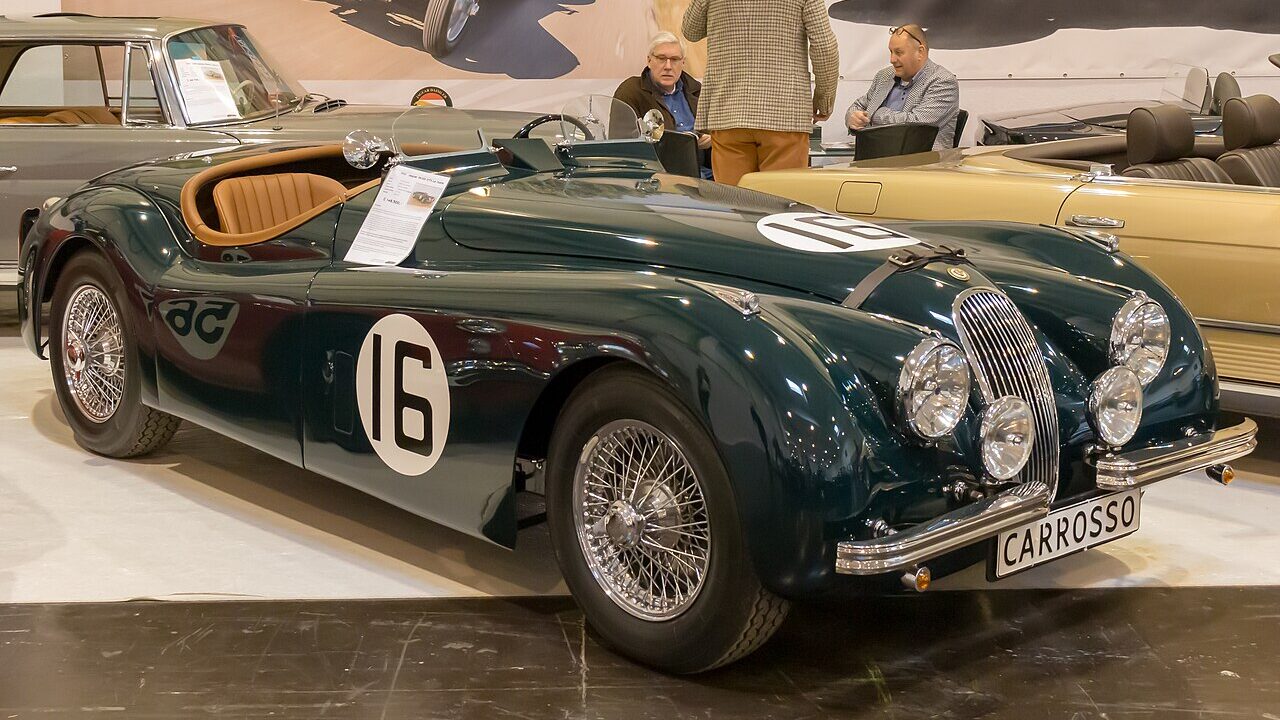
Jaguar unveiled the stylish 2-seater XK120 roadster at the 1948 London Motor Show to showcase its new six-cylinder XK engine. The show attendees loved it and soon started waving their checkbooks around to put down a deposit. Jaguar realized they had to put the car into production right away.
Jaguar named the XK120 after the XK engine and its 120 mph top speed. It was succeeded by the XK140 and is considered to be the great-grandfather of the beautiful E-Type/XK-E.
Bentley Continental GT
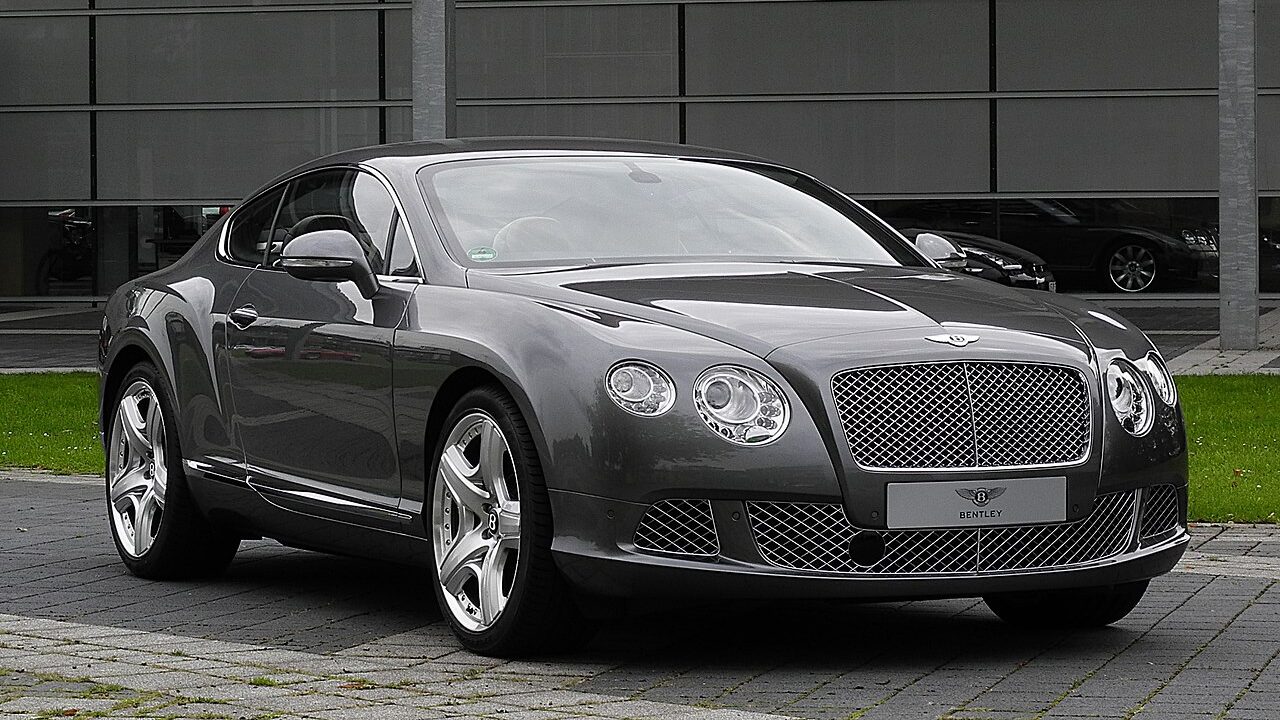
For a long time, Bentley was firmly under Rolls-Royce’s thumb. Once the two companies went their separate ways in 1998, Bentley could go back to building its own cars rather than merely badge-engineering Rolls-Royce models.
Under the Volkswagen umbrella, Bentley now had access to money and the know-how of one of the world’s most successful carmakers. It revealed the Continental GT in 2003, and it was faster, more powerful, had better handling, was more comfortable, and was cheaper than Bentley’s previous cars.
Rolls-Royce Silver Ghost

In 1907, Rolls-Royce built a car specifically for marketing purposes. It was based on the Rolls-Royce 40/50hp, and they named it ‘Silver Ghost’ because it was painted silver and was so quiet it was spooky. Very clever!
Rolls-Royce then set about proving its reliability, and one of the tests meant driving it between London and Glasgow 27 times. The Silver Ghost was soon famous, and Rolls-Royce renamed all the 40/50hp models. As a result, all their subsequent cars were given cool names, such as Phantom, Shadow, and Ghost.
Ariel Atom
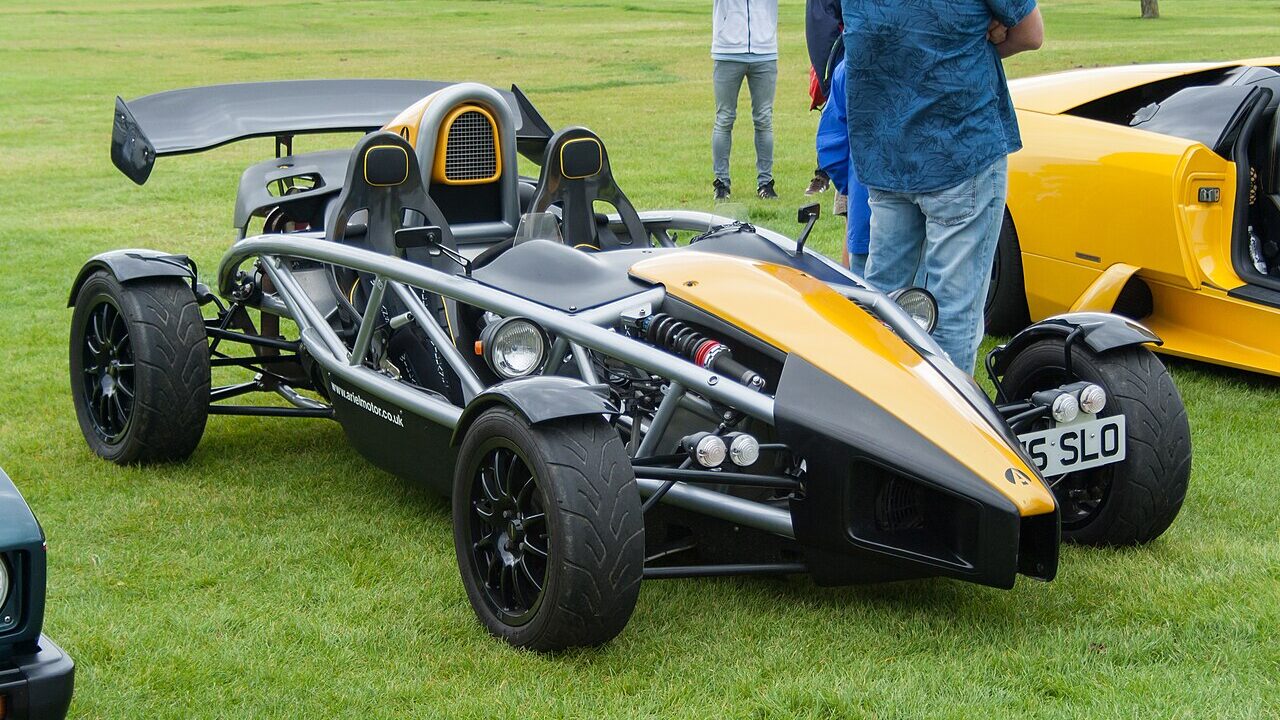
The Ariel Atom is as minimalist as a car can be. Remove two wheels, and it would practically be a motorcycle. What began as a university project has turned into one of the best British sports cars ever – especially if all you’re looking for is driving thrills and couldn’t give a hoot about practicality.
The Ariel Atom offers blistering speed and acceleration thanks to the turbocharged Civic Type-R engine that pumps out more than 300 wild ponies. Thanks to its low weight of just 1,366 lbs and Lotus-engineered chassis, it handles like it’s on rails.
Did you like this article?
Make sure you follow us on Facebook for more builds, guides, and car culture content.


